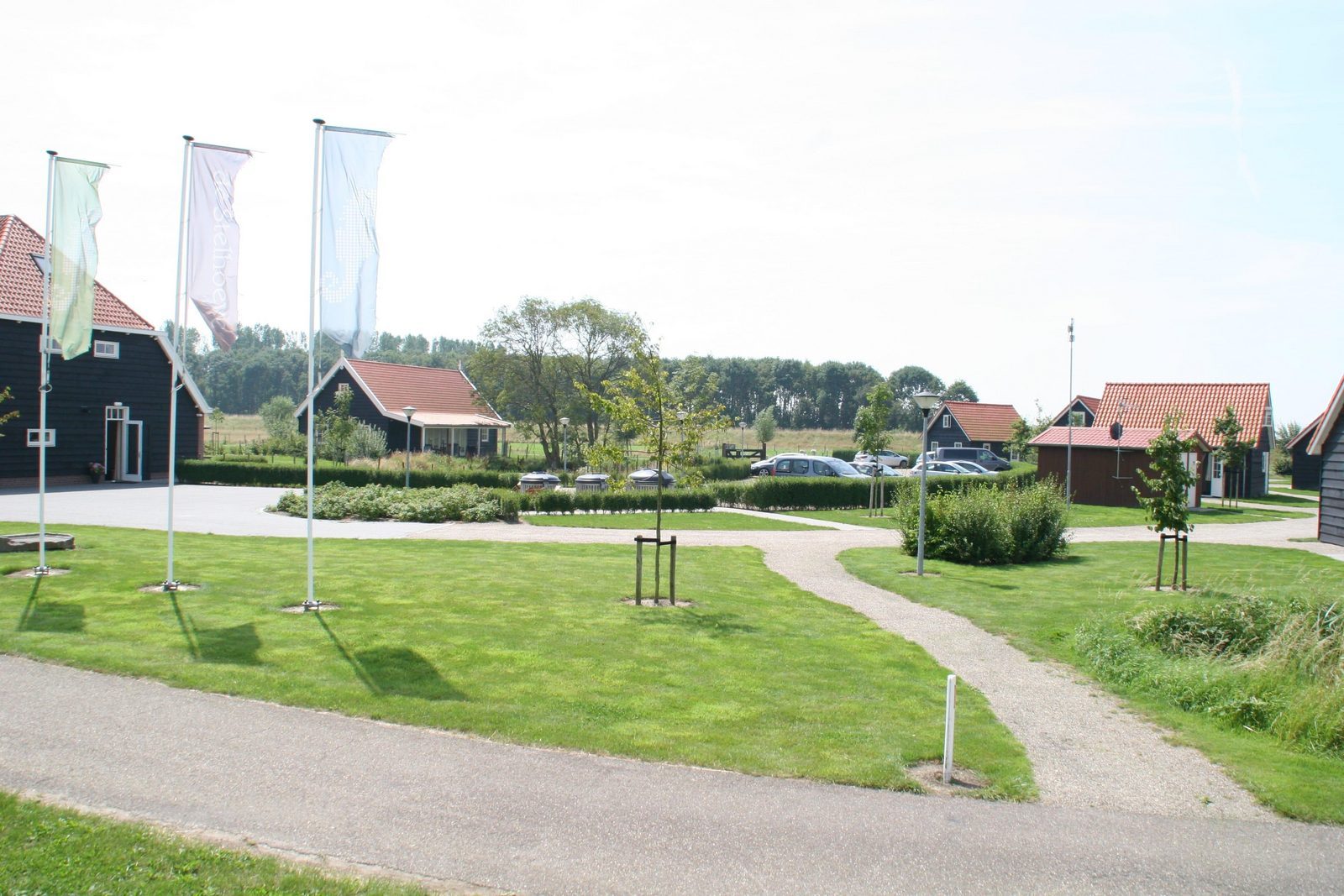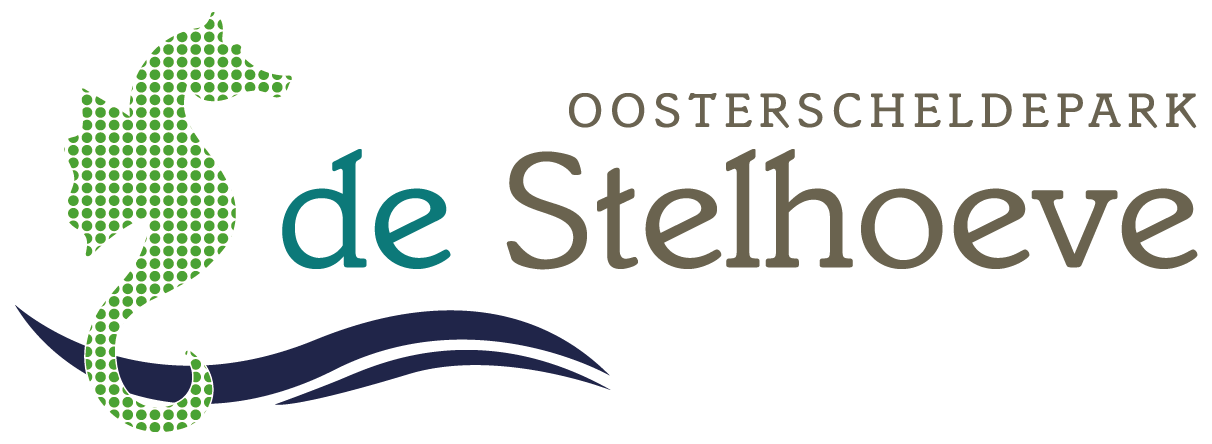
- Home
- About us
About us
De Stelhoeve: achieving a Zoover award in 3 years
Just a few years ago, in 2010, De Stelhoeve's barn went up in flames. Together with Roos & Ros architects, we then created a beautiful plan with the current barn as a beautiful result. Construction company van de Linde from Goes built the barn completely from scratch. And the result is something to be proud of!
In May 2011, De Stelhoeve opened its doors. Located on the Oosterschelde, near the village of Wemeldinge, 18 vacation cottages, a group accommodation and a meeting accommodation were realized. Now 3 years later, the park is highly rated by Zoover, currently holding a score of 8.5! In 2013, the park received the Zoover Highly Recommended award. In early 2014, we were fortunate enough to receive it once again.
National monument
De Stelhoeve is a National Monument in Zeeland, the oldest foundations of which date back to 1540. It is now a renovated old Zeeland farmhouse, a homestead. The grounds are surrounded by nature. The creek near the park is home to waterfowl. Shallows and an old drinking well can be found at De Stelhoeve. The combination of the Oosterschelde, the authentic farmhouse and nature make for a wonderful, peaceful stay.
Maria Coomans
Lady Maria Coomans
Maria Coomans, baptized in Goes on December 19th, 1717, was Lady of Wemeldinge from 1772 until her death on August 8st, 1791. She used De Stelhoeve homestead as her country home. She inherited this title, with all of its associated rights and obligations, from her brother Jacobus Coomans, who died on December 16th, 1771 at the age of 61. Jacobus had succeeded his late brother Pieter in 1758. This Pieter Coomans was married in 1739 to Isabella Westerwijk, who was 22 years his senior, as well as the widow of Johan Rontvis, who was alderman of Goes and Lord of Wemeldinge for many years. Lady Maria Coomans wanted to live up to her title and the associated rights and obligations even more than her brothers and predecessors. She was generous and friendly to both the village and church of Wemeldinge. There was a warm bond, which was perhaps further strengthened by close relations that the Lady maintained with Rev. Jan te Water, who served the municipality of Wemeldinge from 1765 to 1793.
In 1787, Maria Coomans had a will drawn up that was opened after her death in 1791 and that had important consequences for the Wemeldinge community in several respects. Not only was the "great Armen van Wemeldinge" (the poverty council at the time) well conceived by the Lady through a bequest, but this also applied to the church of Wemeldinge.
In the 32nd bequest of the will, the church was allocated the following: a cash amount of seven hundred Flemish pounds and also De Stelhoeve homestead with associated 107 measured land. The amount of money was intended to pay off old debts that the church council had. The rent that Stelhoeve could generate provided the opportunity to maintain the church building for many years to come. However, the bequest came with two notable conditions. Firstly, De Stelhoeve homestead could never be sold and secondly, an "organ for the service of the choir in the aforementioned church in Wemeldinge should never be built or erected on behalf of that church". Failure to meet these provisions at any time, would revert the entire inheritance to the "Armen van Wemeldinge".
What led to the first provision seems quite easy to determine. The Lady must have wanted to protect the church council from a short-term policy in which the farm would be sold for incidental expenses. In addition, preventing the heritage passing to any "outside hands" will also have played a role. The considerations that led to the organ clause are less easy to guess. Historians suggest a number of possible explanations. For instance, it could once again be an anchoring of the Lady's wish that her property would never pass into outside hands. Other possible explanations have more to do with the organ and congregational singing itself. In 1773, a new psalm rhyme was introduced and church organs were installed in many churches during the same period, including in Goes and the surrounding area, to support congregational singing. Some suggest that Maria Coomans had a conservative religious view and wanted to counter these new developments. More likely, however, given her social and ecclesiastical context in her hometown of Goes, is the hypothesis that she infact offered an organ to the church of Wemeldinge during her lifetime but that the church council itself, based on conservative views, refused it.
In later years, especially in the first half of the 20th century, discussions were held many times within the municipality, church council and church guardianship and lawyers and other experts were consulted in the context of attempts by residents of Wemeldinge to finally be able to install an organ in the church. Attempts that repeatedly ran aground on the church council's persistent view that such a decision would seriously endanger the financial position of the municipality. In the 1950s, then pastor Rev. J.G. van Ieperen managed to achieve a breakthrough in the issue with the church council. Organ Foundation Wemeldinge, which operates independently of the church, was founded. This foundation purchased the Van Dam organ of the Reformed Church of Kruiningen, which was damaged by the storm disaster of 1953. One day in the first months of 1958, the church guardianship simply unlocked the church door and some time later, without further interference from the church guardianship, an organ stood inside the church of Wemeldinge.
The final resolution of the complications surrounding Maria Coomans' will followed 40 years later in 1997. Stelhoeve Farm had gradually become much more of a burden than it was a benefit to the church guardianship, which was then called the Church Guardianship Management Committee as a result of the "Samen op Weg" process. The necessary maintenance gradually cost the church considerably more money than the rent yielded. Once again, an expert was asked whether there were was any recourse to sell the farm. Prof. Mr. J. Th. de Smidt, emeritus professor of Dutch law at the University of Leiden and the University of Amsterdam, was asked for advice. Great was the surprise but also the relief when his opinion, prepared on September 15th, 1997, revealed that the specific restrictions on encumbering or alienating the bequeathed property had already lapsed from the entry into force of a decree of January 24th, 1812. Stelhoeve was sold on March 31st, 1998.
Maria Coomans was buried in the Large or Maria Magdalena Church in Goes. To this day, according to another provision in her will, all residents of Wemeldinge should have free access to the church to visit her grave. Alternatively, this provision was also abolished by the decree of 1812...?
Sources:
G.J. Lepoeter, Kerk in Perspectief, verleden en heden van de Sint Maartenskerk te Wemeldinge, Kapelle/Wemeldinge 1989.
G.J. Lepoeter, Maria Coomans, Lady of Wemeldinge, Goes, De Koperen Tuin, 1998.
